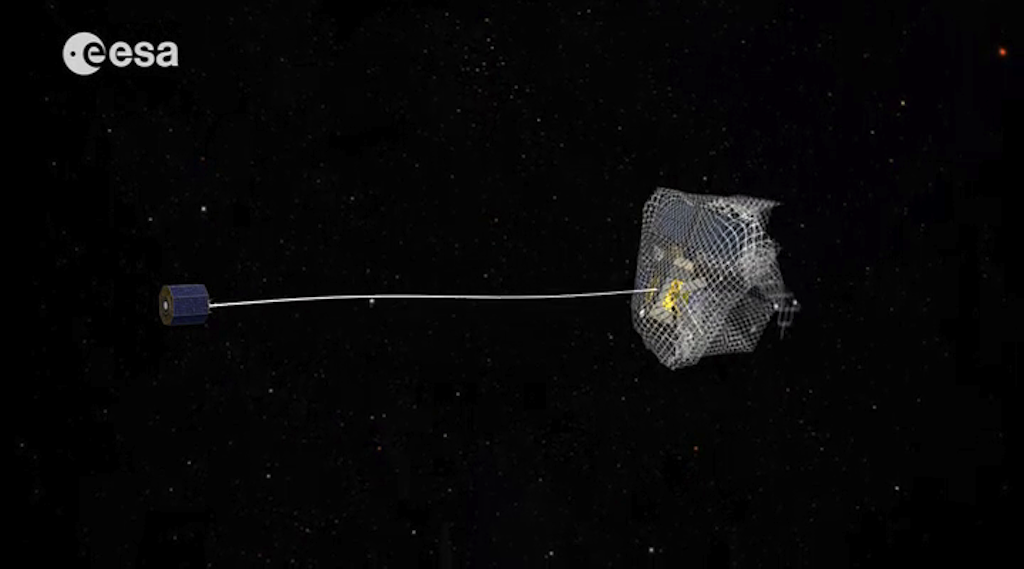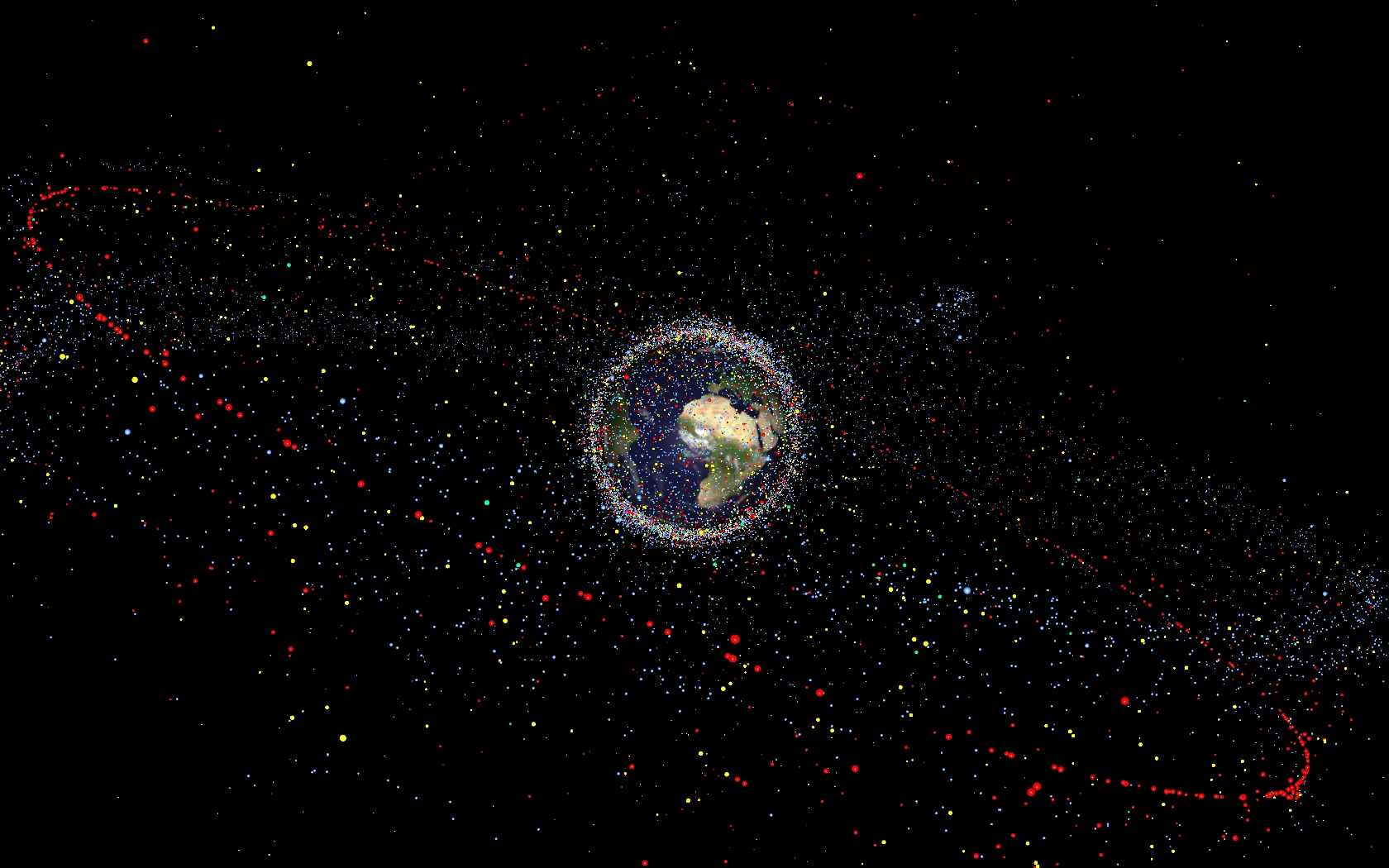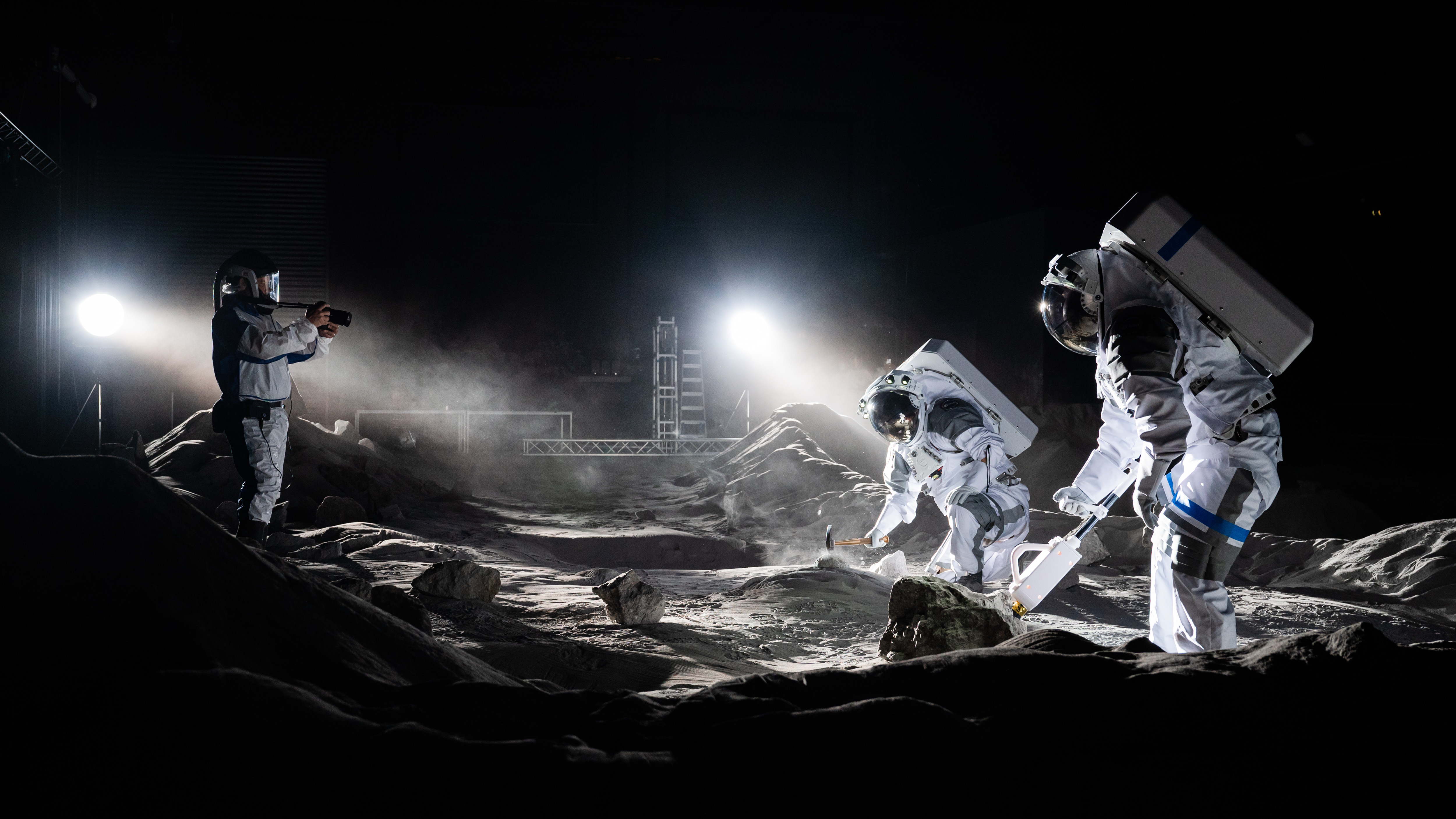Europe Explores Ideas to Clean Up Space Junk

A new European proposal to get rid of space junk adds to a growing list of ideas to get rid of the manmade pollution currently orbiting the Earth.
Called e.DeOrbit, the debris-hunting spacecraft would zoom to a polar altitude of between 500 and 620 miles (800 and 1,000 kilometers) and then approach a piece of debris. After using sensors to move in close, it would then capture the junk in some way, perhaps using a net, or harpoon, or tentacle.
The CleanSpace initiative from the European Space Agency is just one of several proposals to get rid of space junk, however, with other ideas ranging from lasers to electrical currents to even air bursts. As engineers work through the technical issues, week by week the issue is growing.
"Decades of launches have left Earth surrounded by a halo of space junk: more than 17,000 trackable objects larger than a coffee cup, which threaten working missions with catastrophic collision. Even a 1 cm nut could hit with the force of a hand grenade," ESA stated. [Space Junk Clean Up: 7 Wild Ideas]
There are in fact an estimated 500,000 pieces of debris of all sizes, NASA stated, ranging from paint flecks all the way up to derelict spacecraft. Any of these can be deadly to other spacecraft as they speed at up to 17,500 mph (28,160 km/h). NASA occasionally needs to move the International Space Station out of the way in order to dodge space debris.

The ESA proposal is not quite ready for primetime, but will be discussed at a symposium in early May in the Netherlands. Designers are grappling with problems such as the large amounts of fuel that will have to be carried on board, and how to get a possibly tumbling target under control.
The e.DeOrbit joins several other types of space debris removal proposals.
Get the Space.com Newsletter
Breaking space news, the latest updates on rocket launches, skywatching events and more!
A Swiss mission concept called CleanSpace One would zoom into space from the back of a modified Airbus A300 jumbo jet, if it goes forward as planned in 2018. The Japanese Aerospace Exploration Agency is reportedly considering an electrodynamic tether, and flying a part of the mission later this month. Other proposals would use slingshots, air bursts or solar sails to capture errant space junk.
Follow Elizabeth Howell @howellspace, or Space.com @Spacedotcom. We're also on Facebook and Google+. Original article on Space.com.
Join our Space Forums to keep talking space on the latest missions, night sky and more! And if you have a news tip, correction or comment, let us know at: community@space.com.

Elizabeth Howell (she/her), Ph.D., was a staff writer in the spaceflight channel between 2022 and 2024 specializing in Canadian space news. She was contributing writer for Space.com for 10 years from 2012 to 2024. Elizabeth's reporting includes multiple exclusives with the White House, leading world coverage about a lost-and-found space tomato on the International Space Station, witnessing five human spaceflight launches on two continents, flying parabolic, working inside a spacesuit, and participating in a simulated Mars mission. Her latest book, "Why Am I Taller?" (ECW Press, 2022) is co-written with astronaut Dave Williams.
